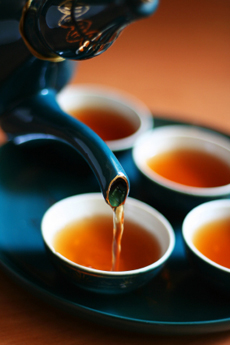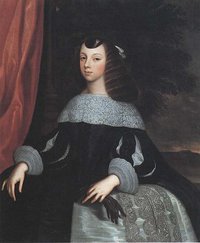Tea And The Brits
First sold in apothecaries and a few coffeehouses, the acceptance of tea into British culture was relatively slow. Tea got an important boost when King Charles II married Catherine of Braganza in 1662, daughter of King John IV of Portugal (and for whom the borough of Queens in New York City is named). She practiced temperance; tea was her drink of choice, and it gained social acceptance among the aristocracy as she replaced wine, ale and spirits with tea as the court drink. In an attempt to please Charles II, the English East India Company brought small gifts of tea from the Continent for Catherine in 1664 and 1666. Other than these gifts, the English East India company did not consider tea to be worth importing from China until 1668, and it was not considered a serious trading commodity for at least another nine years. In 1669, all imports from Holland were prohibited, including tea, granting the English East India Company a monopoly over this commodity. Soon thereafter, the British East India Trade Company (also known as the John Company), which was competing with the Dutch for tea trade, established its first foothold in the East by securing a tea factory in Macao. Tea’s popularity was on the rise in London’s cafes and coffee houses. Catherine of Braganza’s choice of tea was instrumental in the popularization of tea in Britain. Because tea was introduced primarily through male-frequented coffee houses, there would have been far less social acceptability for women to drink this beverage had it not been for her example. Catherine of Braganza’s use of tea as a court beverage, rather than a medicinal drink, influenced its popularity in literary circles around 1685. By 1686, tea was selling in markets, and the English East India Company considered it to be a part of their regular trade. It was no longer only a specialty item brought back by a ship’s captain for personal use. Women were first introduced to tea on a wide scale when Lyon’s tea house opened. This provided a place for women, accompanied by a male escort, to go and visit with one another in an acceptable atmosphere. Women were also served tea in the London tea gardens of the early 1730s. Tea gardens were outdoor gardens with flowered walks and music for dancing. They opened in April or May and remained open until August or September, serving tea and other beverages. One had to pay to get in, and the working class was not admitted.
Continue To Page 5: The British East India Company & Tea Plantations In India Return To Article Index At The Top Of The Page
|

The Nibble Blog
The Latest Products, Recipes & Trends In Specialty Foods
The gourmet guide you’ve been waiting for. New food adventures are served up daily. Check it out!

Food Glossary
Our Food Directories Are "Crash Courses" In Tasty Topics
Your ultimate food lover’s dictionary packed full of information and historical references. Take a look!

Food History
Let the journey begin!
Learn about the history Of 1,000+ Favorite Foods & Beverages Let’s explore the history of your favorie goods together.Let the journey begin!


